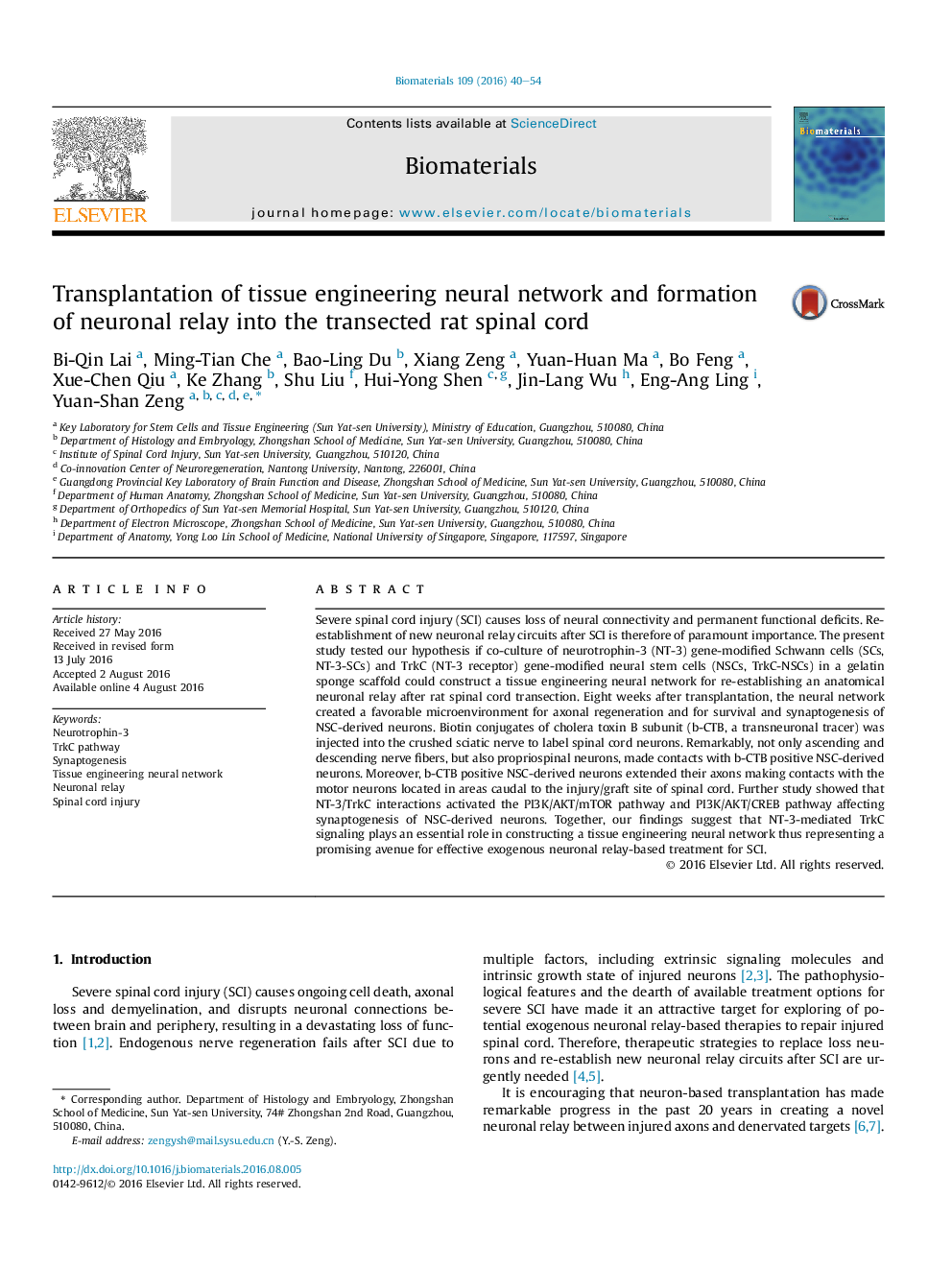| Article ID | Journal | Published Year | Pages | File Type |
|---|---|---|---|---|
| 4752486 | Biomaterials | 2016 | 15 Pages |
Abstract
Severe spinal cord injury (SCI) causes loss of neural connectivity and permanent functional deficits. Re-establishment of new neuronal relay circuits after SCI is therefore of paramount importance. The present study tested our hypothesis if co-culture of neurotrophin-3 (NT-3) gene-modified Schwann cells (SCs, NT-3-SCs) and TrkC (NT-3 receptor) gene-modified neural stem cells (NSCs, TrkC-NSCs) in a gelatin sponge scaffold could construct a tissue engineering neural network for re-establishing an anatomical neuronal relay after rat spinal cord transection. Eight weeks after transplantation, the neural network created a favorable microenvironment for axonal regeneration and for survival and synaptogenesis of NSC-derived neurons. Biotin conjugates of cholera toxin B subunit (b-CTB, a transneuronal tracer) was injected into the crushed sciatic nerve to label spinal cord neurons. Remarkably, not only ascending and descending nerve fibers, but also propriospinal neurons, made contacts with b-CTB positive NSC-derived neurons. Moreover, b-CTB positive NSC-derived neurons extended their axons making contacts with the motor neurons located in areas caudal to the injury/graft site of spinal cord. Further study showed that NT-3/TrkC interactions activated the PI3K/AKT/mTOR pathway and PI3K/AKT/CREB pathway affecting synaptogenesis of NSC-derived neurons. Together, our findings suggest that NT-3-mediated TrkC signaling plays an essential role in constructing a tissue engineering neural network thus representing a promising avenue for effective exogenous neuronal relay-based treatment for SCI.
Related Topics
Physical Sciences and Engineering
Chemical Engineering
Bioengineering
Authors
Bi-Qin Lai, Ming-Tian Che, Bao-Ling Du, Xiang Zeng, Yuan-Huan Ma, Bo Feng, Xue-Chen Qiu, Ke Zhang, Shu Liu, Hui-Yong Shen, Jin-Lang Wu, Eng-Ang Ling, Yuan-Shan Zeng,
